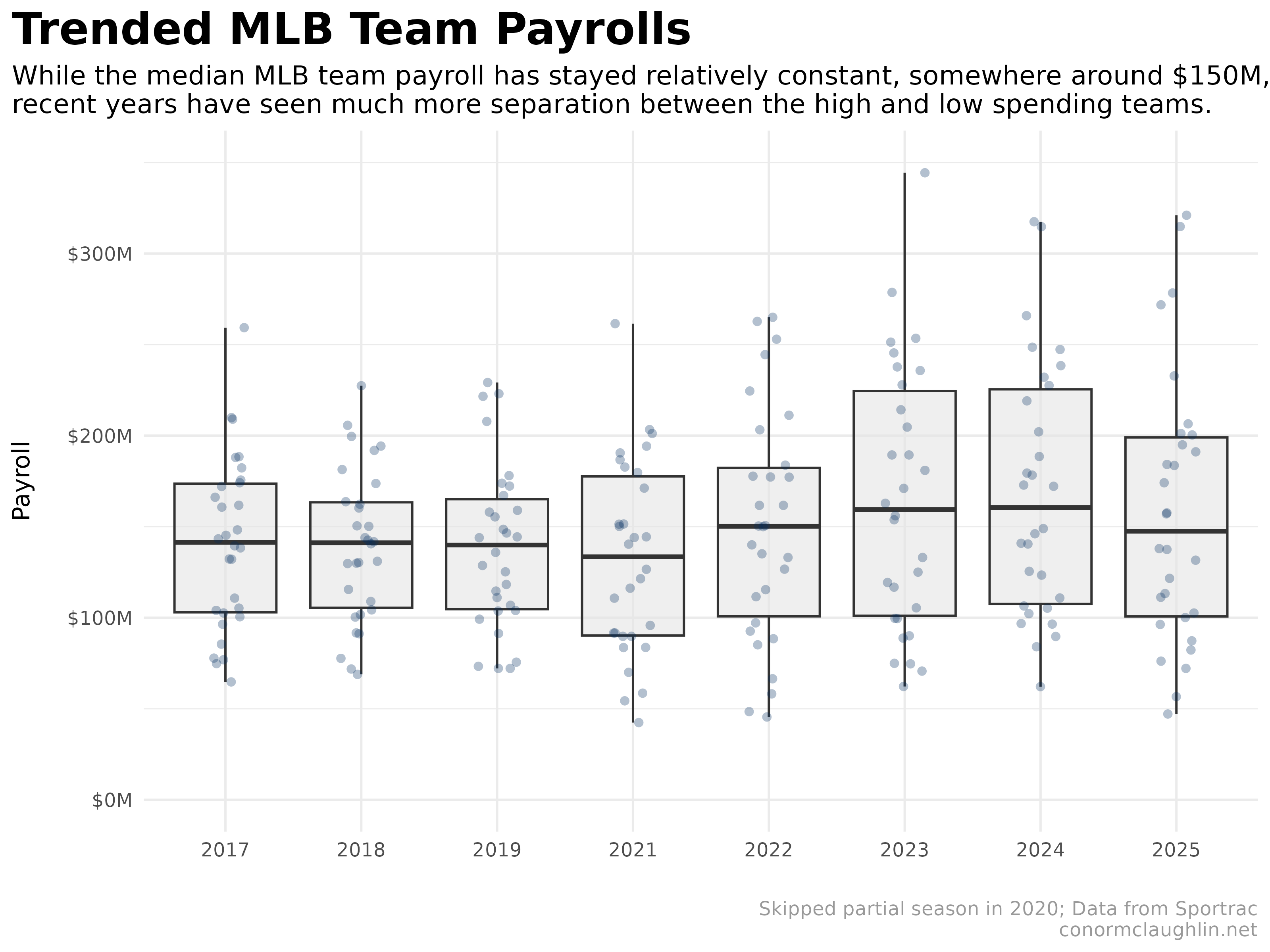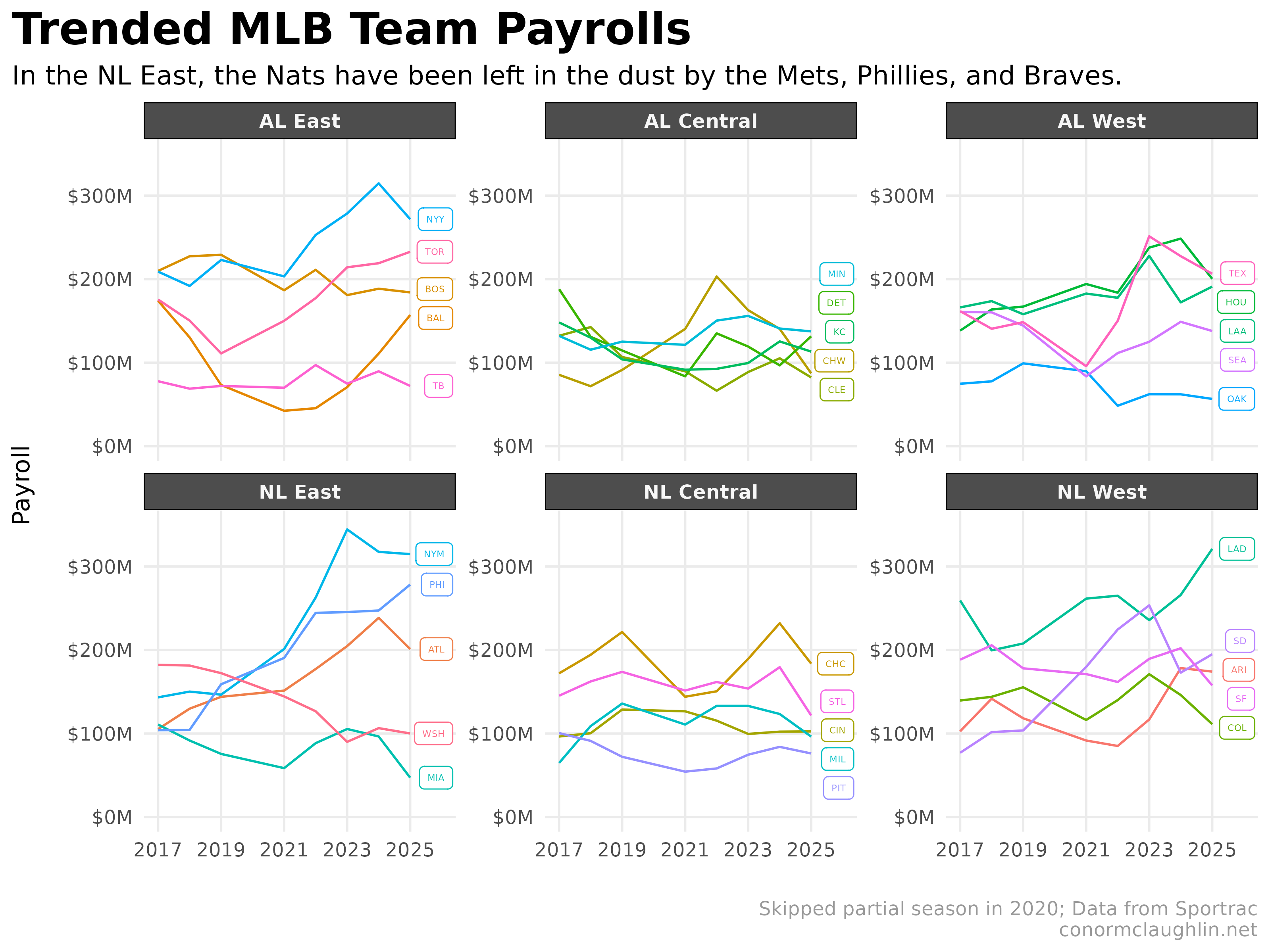With Spring Training well underway in Florida and Arizona, I’ve started doing a little reading and research in anticipation of Opening Day - set to be March 18th for the Dodgers and Cubs in Tokyo, and March 27th for rest of the league.
One of the biggest topics of conversation this offseason for the Washington Nationals was whether or not they would be active on the high-end free agent market, potentially signing a few veterans to augment their promising young core. While they did make a key trade to address a clear area of weakness at first base, acquiring Nathaniel Lowe from the Texas Rangers, they didn’t sign any marquee free agents to bolster their roster or rotation, much like the 2024 offseason, 2023 offseason, 2022 offseason, and 2021 offseason.
While the Nats of the 2010s spent aggressively in pursuit of playoff spots and ultimately their first World Series Championship, the Nats of the 2020s seem to have been managed with one hand tied behind their back - forcing their homegrown rebuild to be entirely responsible for turning the roster around, with seemingly no desire to spend to accelerate that timeline.
I very much feel that this is a penny-wise, pound-foolish move - a team like the Nats, playing in a rich and populous media market, and a highly competitive division in the NL East, should be spending like a top-10 team in the league, not a bottom-10 team! As the enduring success of the Braves and Dodgers has shown, teams can develop and promote great prospects to the majors while also using their financial resources to address weak spots on the roster through free agency - those approaches are not mutually exclusive.
While I don’t know all of the constraints that the Lerner family have placed on General Manager Mike Rizzo, it’s extremely clear that the guidance coming from Mark Lerner and his siblings is very different than what came from his father Ted.
In this post, I wanted to look into the Nats’ financials to show how unique the drop in spending we’ve seen from them is, and present a few more charts of payroll trends around the league to contextualize how the greater environment is changing.
Visualizations
Decline in Washington Nationals Team Payroll
The data confirms that the Nats have fallen well behind the rest of the league on team payroll, going from one of the league’s biggest spenders (anywhere from 5th to 7th from 2017 to 2019) to the 23rd ranked team in 2025, below the Cincinnati Reds and Kansas City Royals.

Boxplot of MLB Team Payrolls over Time
The the decline in the Nationals’ spending comes at an interesting time in the league, where the richest teams (like the Dodgers, Mets, and Phillies) have made full use of their financial firepower. The boxplot below shows how the spread in team payrolls has grown over time, especially due to spending on the high end.

Indexed Yearly Team Payrolls

Trended MLB Team Payrolls, by Division
The Nats play in a brutally competitive division in the NL East, with all of their peers (aka not you Marlins) having made the World Series since 2015. I encourage the Lerner family to think about whether or not the Marlins or the Braves present a better model for player development and acquisition - I think the coming year or two represent a huge inflection point for the franchise.
While James Wood, Dylan Crews, Mackenzie Gore, CJ Abrams, Luis Garcia, Travis Sykora, Brady House, and Robert Hassell all seem promising, I guarantee the roster will still need bolstering if the Nats are going to contend with the best teams in baseball starting in 2026 - I challenge the Lerners to give Mike Rizzo the resources he needs to field a top-end team, befitting the DC market.
